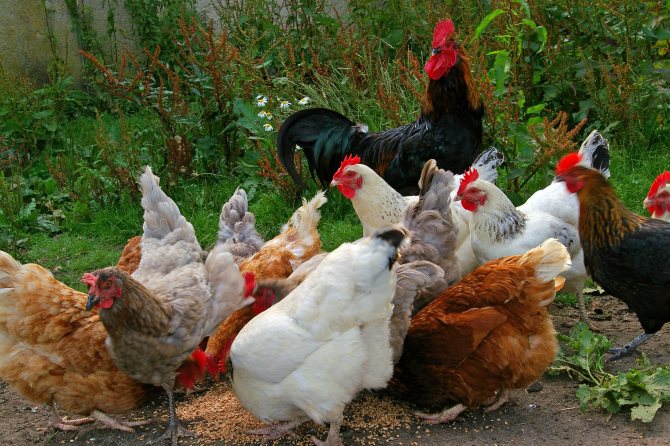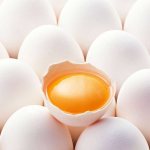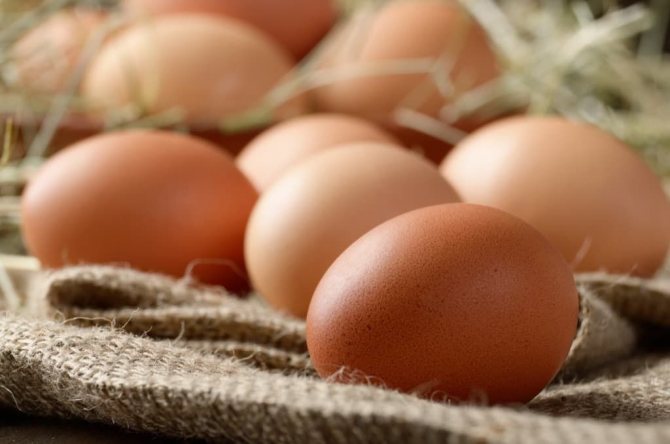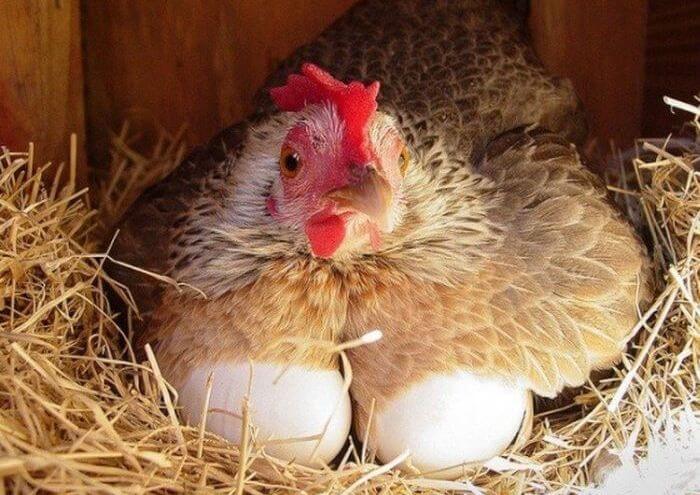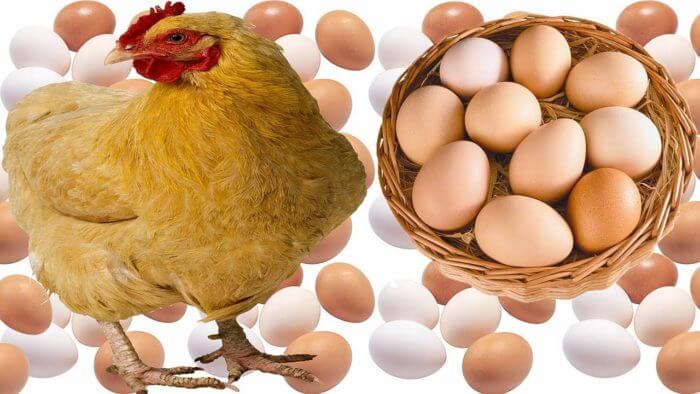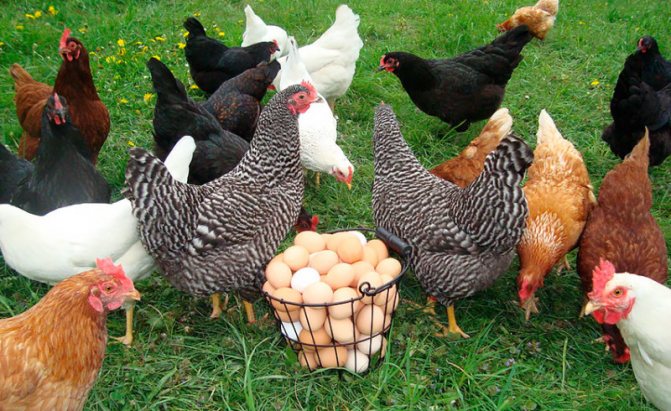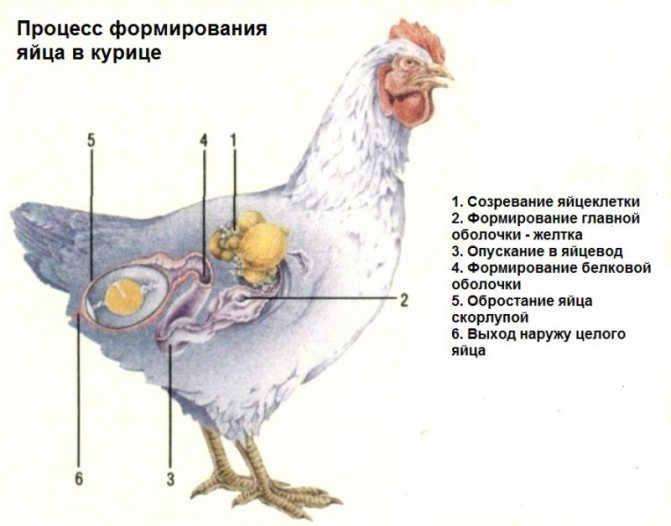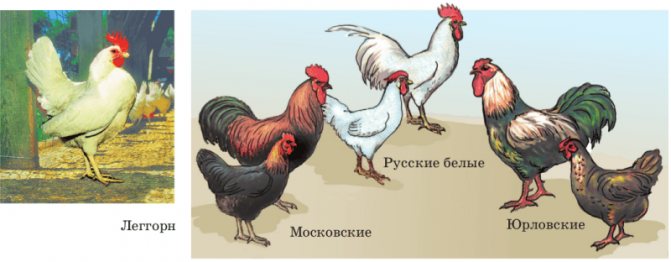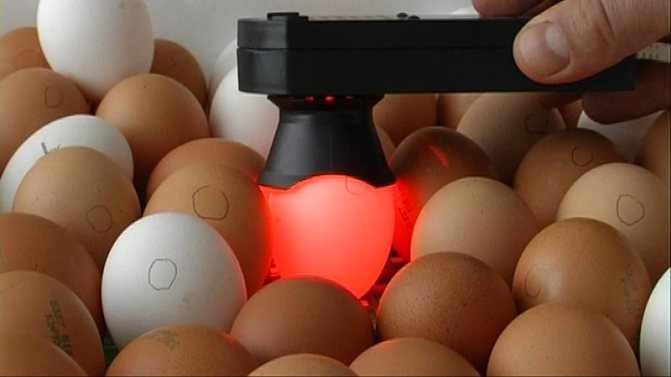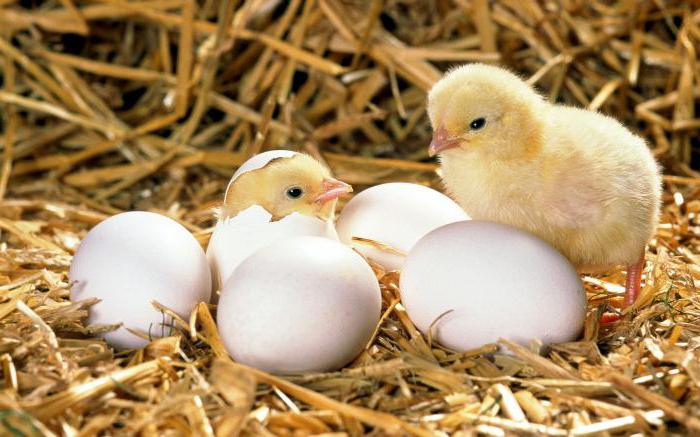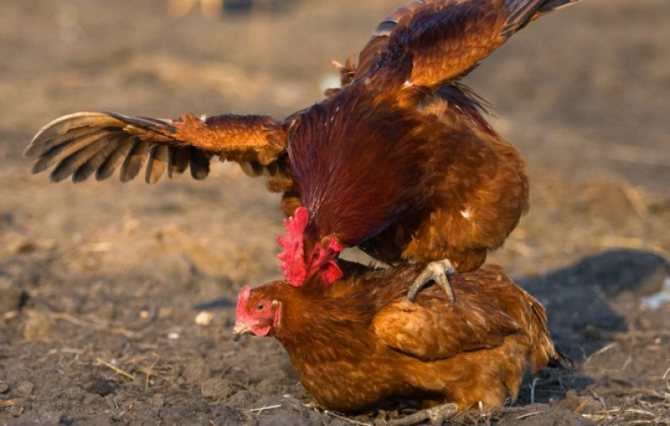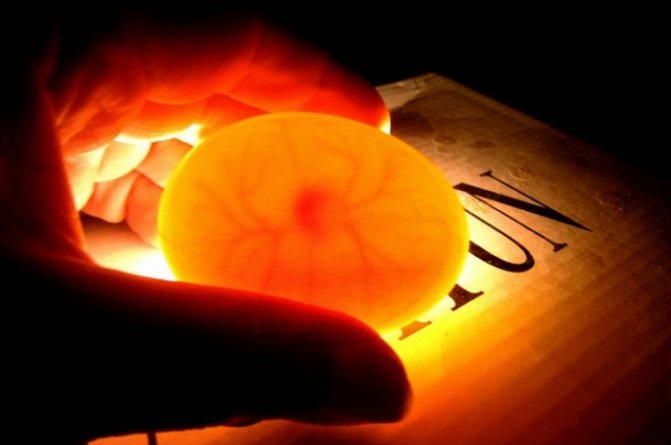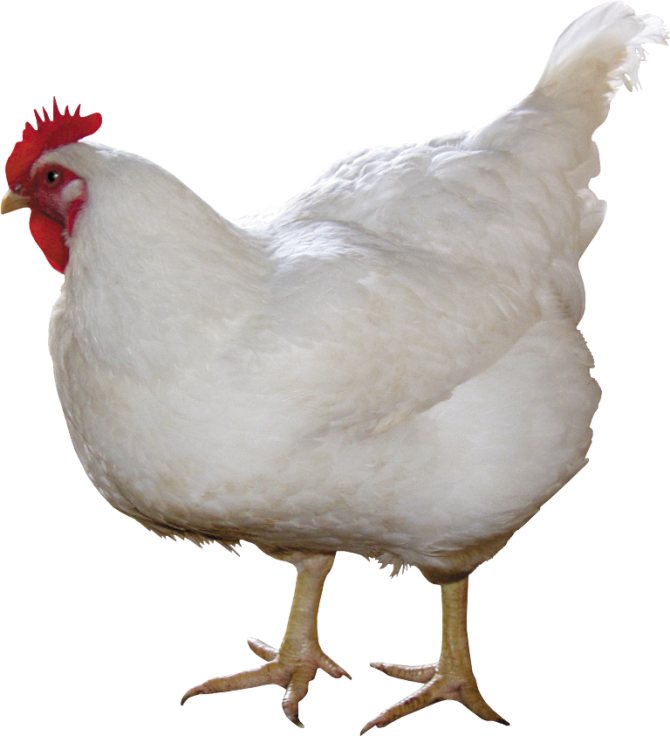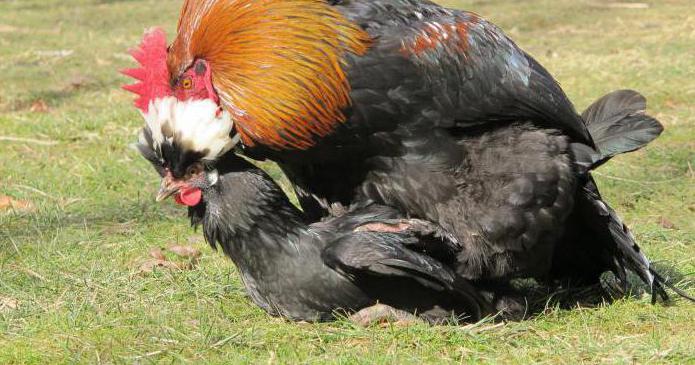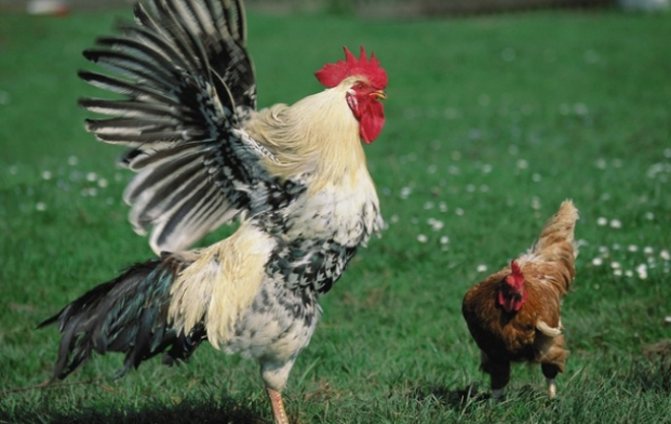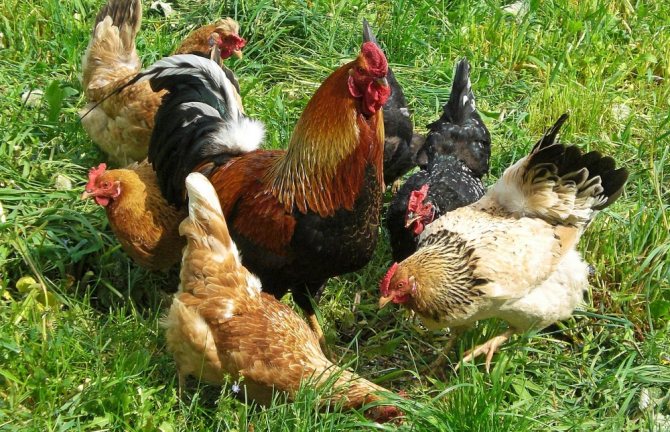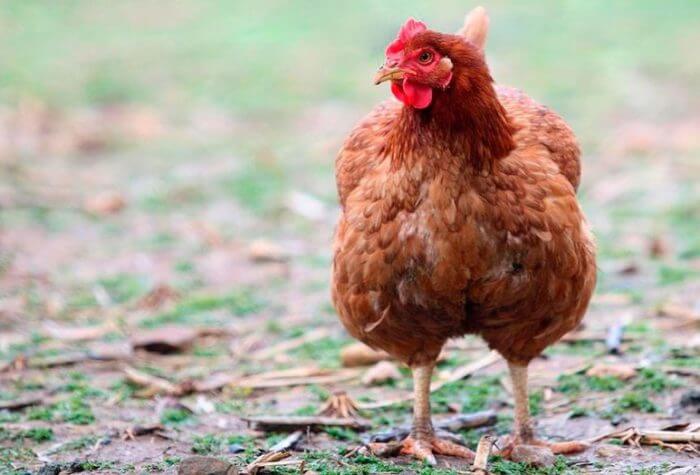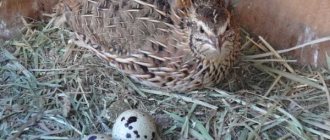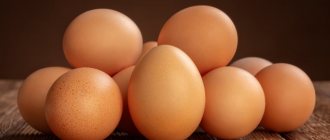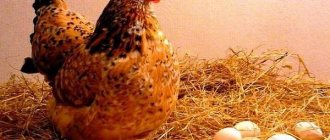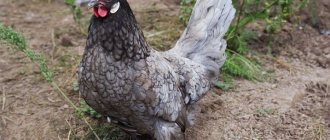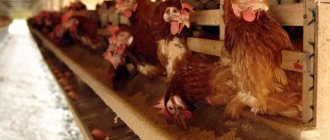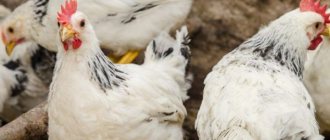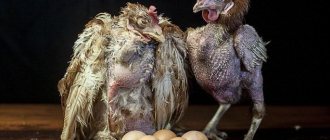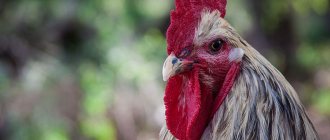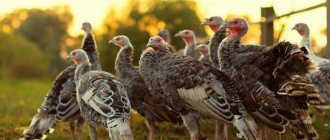The hen carries out the first clutch after the end of puberty. The time of puberty is not the same for different breeds. Beginners need to study the characteristics of bird crosses to determine when chickens start to lay. Females of egg production are early maturing. They start laying eggs as early as 20 weeks.
Individuals of meat breeds carry out the first clutch at 6-8 months. They are considered late maturing. Young hens have a small comb, mostly pink in color.
Egg-laying hens carry a larger comb. Its color is more intense. Often the ridge falls on its side. How does an egg form in a chicken's body? What affects the quality of the masonry?
How many eggs does a chicken lay
The chicken rushes unevenly throughout the year. Its productivity depends on a number of factors. To assess the profitability of raising chickens and their productivity, it is easiest to count eggs per year.
Per day
It is impossible to unequivocally determine how many eggs an average laying hen produces per day. Under ideal conditions of keeping and feeding, one adult hen at the age of a year or two in the summer produces one egg in one or two days. In winter, productivity drops significantly. During this period, the chicken is carried no more than once every few days.
In Week
Depending on the breed and individual characteristics, a young hen in the summer can lay 4-7 eggs per week. In birds older than two years of age, productivity decreases by 10-20% every year.
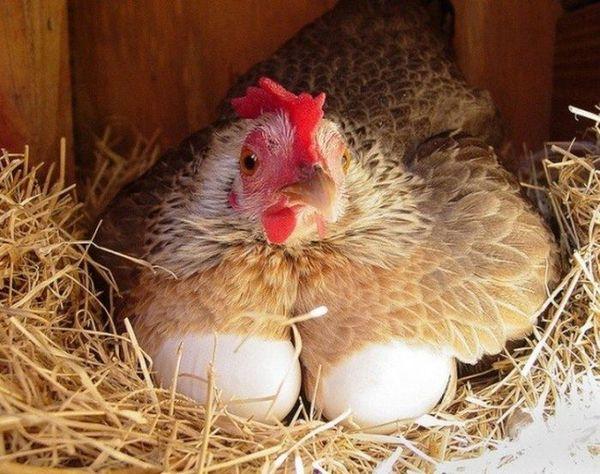
Per month
For a month, at least 15 eggs are obtained from one layer. In the summer, with intensive feeding, a young healthy hen can please the owners with thirty eggs. Average normative indicators are 20-24 eggs per month.
Per year
The minimum number of eggs obtained per year from one hen is 200 pieces. Under favorable conditions of keeping and adherence to feeding norms, the average number of eggs obtained from a healthy livestock reaches 280-300 pieces per year. A highly productive bird lays up to 340 eggs per year.
Chicken egg composition
Nature has laid down that the embryo is located in the egg, which requires a huge amount of elements necessary for its growth and development. What's inside the egg:
- The yolk contains a large amount of carotenoids - the most important elements for the maturation of new individuals;
- Protein ropes are attached to the yolk, which is located in the shell, which fix the yolk and give it the ability to turn;
- The protein has a special shell and shell, between which there is an air chamber.
| Element | Concentration in one egg |
| Protein | 55-57% |
| Yolk | 30-32% |
| Shell | 10-13% |
The chemical composition of an egg looks like this:
- water (73-74%);
- dry matter (26-27%);
- fats (11-12%);
- proteins (12-13%);
- carbohydrates (0.8-1.2%);
- the egg contains a certain amount of lysocine, a natural enzyme that prevents spoilage of the product.
Video - How chickens lay eggs in poultry farms
The average person consumes about 200 eggs annually. It is one of the most common foods, renowned for its taste and health benefits. From an interesting and informative video, you will learn how eggs get on our table, how white and brown products differ, and also which way eggs go before they get to supermarkets and shops.
Nature has created a unique product, the benefits and taste of which are indispensable for humans. Follow the rules for keeping layers, feed the birds correctly and the productivity of the chickens kept on your farm will be high, and the eggs will be tasty and of high quality.
How often the chicken is laid
The average young hen of the egg breed with a standard level of egg production in the summer is laid almost every day. In winter, with the exception of the moulting period, the hen is laid every two to three days.
See also
When chickens begin to lay at home and the duration of egg productionRead
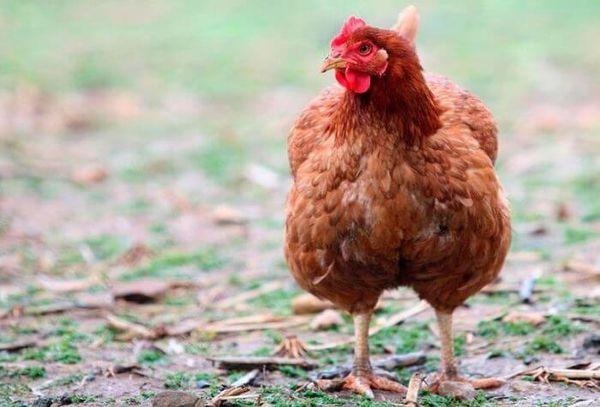

The device of the reproductive system of chickens
To thoroughly understand the intricacies of fertilization of chickens, you need to know the anatomy of birds and the structure of their reproductive system.
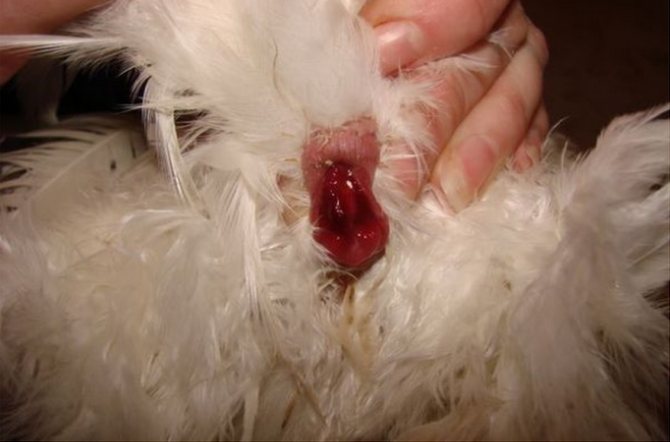

Chickens have an oviduct that ends in the middle section of the cloaca.
The genitals of the rooster are small testes, branched into thin canals (vas deferens) that end in the cloaca. Sperm are released through a small papilla.
The reproductive system of the chicken is represented by the ovary in the form of a bunch of grapes, which is located on the right, and the oviduct, which ends in the middle section of the cloaca. An egg cell is formed and matured directly in the ovary, which subsequently turns into a yolk.
What determines the quantitative indicator of egg production in chickens, how to increase it
The productivity of chickens depends on many accompanying factors:
- feeding features;
- conditions of detention;
- the age of the bird;
- breed characteristics;
- season.
Every novice poultry breeder wants to get the maximum number of eggs from layers. However, for this you will have to try hard - favorable living conditions, timely feeding and daily monitoring of the livestock will allow you to achieve the desired result.
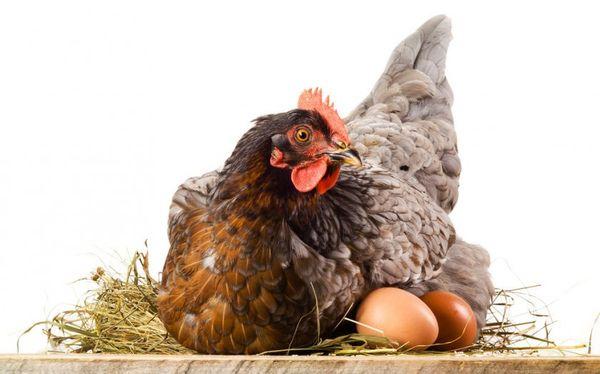

Diet of laying hens
To maintain egg production at a high level, the following feed groups are included in the diet of layers:
- carbohydrates;
- proteins;
- minerals;
- vitamins.
Feeding chickens should be evenly distributed throughout the day and take place at the same time. In private backyards, three meals a day are most often practiced. The bird is given:
- wet mash, consisting of compound feed and various additives;
- dry grain, which ensures the functioning of the stomach;
- fresh herbs;
- vitamins;
- mineral feed responsible for the strength of the shell.
The use of ready-made balanced compound feeds for feeding chickens in accordance with age and feeding norms has a beneficial effect on the productivity and health of the livestock.
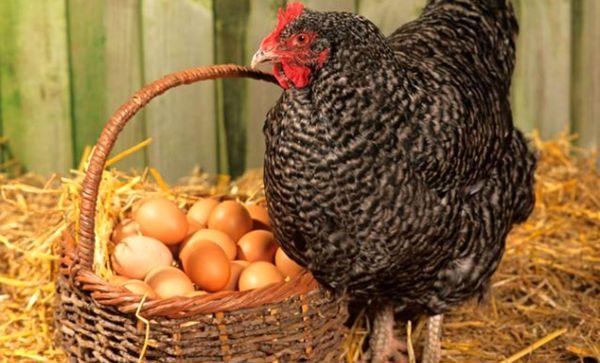

Decrease in egg production
As a rule, healthy chickens produce eggs consistently during the summer. The fall in productivity in winter is influenced by many factors:
- The reason for the decrease in egg production in winter is the shortening of daylight hours. In order to keep productivity at a high level, additional lighting using infrared lamps is installed for layers.
- Violation of the temperature regime is a common cause of a drop in egg production. The average standard temperature for chickens is 15 ° C. At low temperatures, high-quality insulation of the chicken coop and heating equipment is required.
- Stagnant air and high humidity cause colds in chickens and reduce productivity. The chicken coop requires a high-quality ventilation system that provides fresh air and does not create drafts.
- Inadequacy of nutrition to the needs of the bird is reflected in the level of egg production. The health and productivity of chickens in winter require special attention. The addition of various vitamins during this period will help keep productivity high.
- The lack of space in the hen house is also of great importance. No more than five chickens can live on one square meter. With denser plantings, chickens become anxious and rush much worse.
- One or two chickens require comfortable nesting equipment. If there are not enough nests in the hen house, layers look for secluded places in the yard and rush there.
- Chickens have a seasonal change of cover every year. During the molting period, productivity drops significantly or disappears altogether.The use of fortified feed during this period will help speed up over-plating and resume egg production.
- Vaccinations help prevent a number of common diseases. Daily close inspection of the livestock contributes to the timely identification of sick individuals and their immediate treatment.
- The presence of parasites in the feather cover often causes anxiety in chickens and reduces their productivity. Timely disinfection of the chicken coop using slaked lime or specialized preparations will help prevent their appearance. Having enough sand and ash in the coop also helps to get rid of annoying parasites.
- From the age of five months, hens begin to lay. Their productivity increases every month. However, after two years of age, egg production invariably falls. To maintain it at the same level, timely renewal of the herd is required.
See also
How many grams does one chicken egg weigh and deciphering the markingsRead
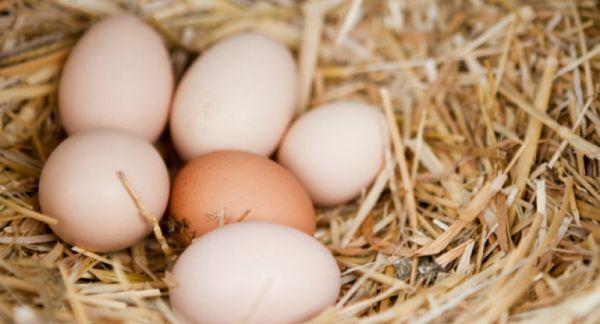

Constant control over the above factors contributes to the cultivation of healthy livestock with high egg production.
Breed features
Depending on the expected productivity, the following breeds are bred in private farmsteads:
- meat and egg chickens are capable of producing 150-180 eggs;
- egg birds lay 260 or more eggs;
- meat ones allow you to get 110-130 eggs per year.
In the summer, with proper care and good nutrition, healthy chickens rush every day. In winter, it is not possible to maintain productivity at the same level. Frost, short daylight hours and moulting strongly affect productivity and reduce it. During the molt period, the bird does not rush at all.
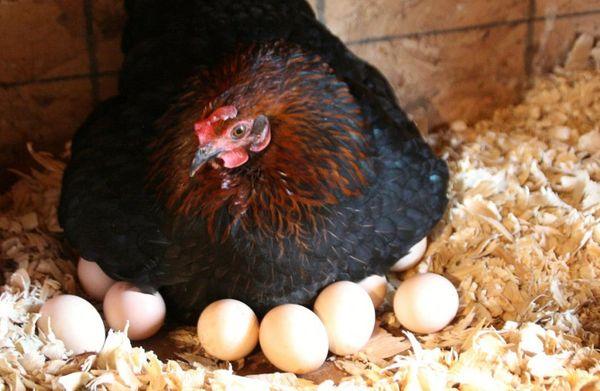

Feeding features
For chickens to fly well, their diet must be abundant and balanced. This rule must be especially observed in the winter season. Part of the grain feed should be pre-germinated. The recipe is pretty simple. Corn or barley is soaked in lukewarm water. In this form, the feed is scattered in a small layer in a separate room, while the optimum temperature in it should be +25 degrees Celsius. Keep the grain moist at all times. After a few days, the first shoots will appear, after which the feed can be fed to the hens.
Some people add yeast to the feed to increase the egg production of the poultry in question. The recipe is also simple. Take 30 grams of fresh yeast, dilute them in 1.5 liters of water, and then add to 1 kilogram of crushed grain. The mixture is mixed well and left for 8-9 hours in a warm room. After that, the composition is ready for use and can be added to the mash (special feed mixture).
Do chickens rush without a rooster?
In a private courtyard, the need to buy a rooster arises in the following cases:
- for fertilization of eggs and breeding of their own chickens;
- for enjoying morning singing;
- for delicious meat.
If there is no desire to annually receive their own chickens from layers, the presence of a rooster on the farm is not necessary.
The choice of a suitable breed, favorable growing conditions, feeding taking into account norms and age characteristics allow you to grow a healthy flock and get delicious homemade eggs every day.
Leader in the chicken coop
There is no need to minimize the role of the feathered gentleman, because the rooster can become a real invaluable helper. He gives a wake-up signal early in the morning and, like a good owner, creates an approximate order in the chicken coop. Young individuals behave more calmly, chickens do not fight and defend the right of primacy. They have ankle spurs that can cut through the skin. The rooster monitors the safety of all his subordinates and can drive away a stray dog, fight alone with a hawk or a ferret.But they can also exhaust the hen if she doesn’t agree to intercourse, or you have too many males. If you need to get offspring, then the rooster is indispensable in the chicken farm. There are too aggressive individuals who can attack a child or a person, since they are very ardent by nature, they are used to playing the role of a leader, and in this case, he has a direct path to soup.
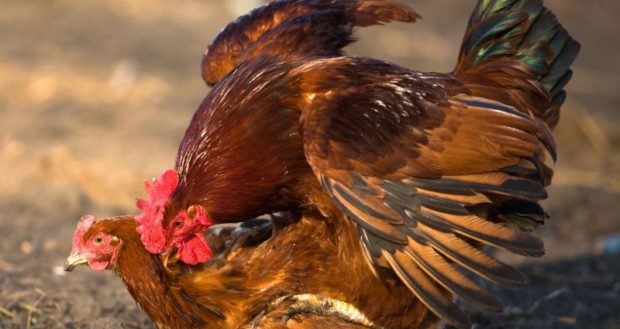

The main functions of the owner of the chicken coop
In many villages there is a belief that if there is no rooster with chickens, then productivity will be lower. This is another misconception, chickens will lay the same number of eggs, but not fertilized ones.
Having a rooster in the herd is helpful:
- For hatching your own chickens.
- To stimulate walking chickens.
- To increase egg production (without a rooster, this property fades faster).
- If you want to have a singing rooster.
- As a chicken guard (but not always roosters are brave).
- Allows chickens to live 35 years longer.
- For decorative role.
- Have a delicious Sunday broth.


The rooster is brighter, with a developed comb, long spurs and beautiful arched tail feathers, it is a real decoration of the chicken coop.
Best breeds
The best laying hens breeds:
- Leghorn - their productivity reaches 300;
- Laurent Brown - 315 i / g;
- Minorca - about 200 i / g;
- Russian white - up to 200 I / g;
- Hamburg - 220 I / g;
- Andalusian - 200 I / g.
It is interesting! In 1930, the Leghorn laying hen was listed in the Guinness Book of Records for 361 eggs laid per year.
